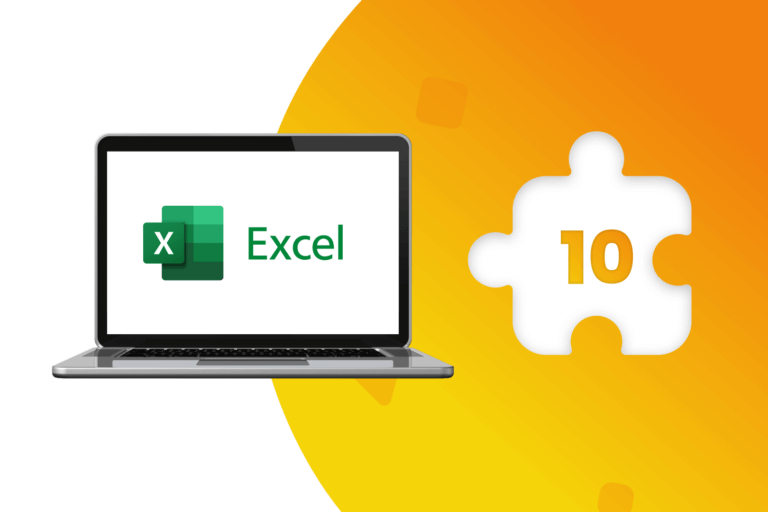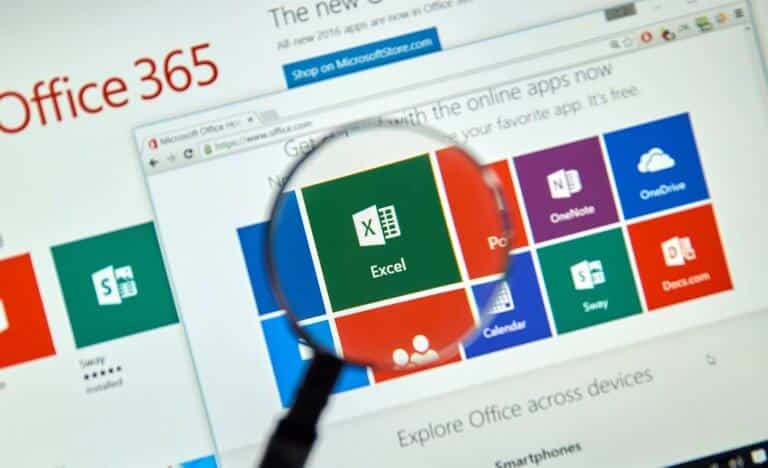The administrative modernization of a company is much more than the sum of technologies or IT infrastructure. It implies a cultural evolution based on the change of strategies, the constant updating of skills and competencies of leaders and collaborators, and the incorporation of new management tools aimed at optimizing their global efficiency in the long term.
The accelerated transformation experienced by modern world not only translates into the need to implement changes in IT infrastructure or equipment. It is also essential that, companies and, fundamentally, their human teams, evolve towards a new dimension of efficiency and competitiveness.
This implies, consequently, that organizations adapt to these new times, by implementing a new concept known as “Modern Administration”.
However, we must understand that this evolution goes far beyond the superficial, since experts agree that the concept “modernity” implies much more than a simple sum of technologies or equipment. It represents a radical change in strategies, which objective is to consolidate the efficiency, productivity and competitiveness of organizations, so that they can successfully perform in a highly changing and increasingly demanding environment.
MORE THAN THE SUM OF THE PARTS
Why is it so necessary to take this radical step? Simply because the current transformation scenario that the organizational and labor world is experiencing, translates into the need to have a human capital that is increasingly prepared and with better competencies, abilities and skills, to face this path of changes.
At the same time, organizations must promote the improvement and adaptation of their management and operational structures. In this way, internal evolution will be joint with the improvement of human talent.
This implies adopting transcendental changes in areas as important as its operational and economic structure, executive leadership, people and team management, brand image, employee experience and internal culture. All this from a joint point of view, tightly related with the evolution of technological equipment and cultural, operational, competitive and strategic structures.
In other words, modernization means much more than the sum of its parts. It implies to quit the current organizational paradigms and apply a strategic re-construction of objectives, methods, tools and resources, aimed at successfully adapting to a dynamic environment.
Without a doubt, it is an unavoidable challenge, because, as international experts assure, the cost of not joining this evolution will inevitably be the loss of competitiveness, market and customers. All of which will inevitably lead to the disappearance of those who do not have sufficient strategic vision to modernize themselves.
In other words, only companies that have an effective modern administration will have the culture, the tools, the structure, the technology and the appropriate trained personnel to successfully face the constant changes of scenery and, at the same time, consolidate their vision of future.
STRATEGIES OF A MODERN COMPANY
If we considered that the objectives of any modern administration consist of planning, organizing, directing, coordinating, controlling and evaluating human, technical, material and financial resources (in order to successfully face this era of constant evolution), it is necessary then to put into practice a new culture of efficient management, based on a decisive change in strategies.
This implies adapting management processes to current economic, social and technological changes, in order to face the new visions of the future, with a better base for action and growth.
For this, it is also necessary to incorporate a large series of new tools, which work with concepts such as agile methodologies, total quality, and management and continuous improvement systems, among others. All of them allow to structure, organize and operate a company in an effective and efficient way.
If we want this adaptation would be successful, the company must also need trained human capital, academically and technologically speaking. This implies that each employee has the ability to make good use of the appropriate techniques and procedures, in the shortest possible time.
The modern company must also have managers, directors and shareholders with new characteristics and leadership attributes. That is, they must be capable of coordinating professional work groups, in an agile and flexible way, proactively motivating them, and giving them all the opportunities to update their knowledge, so that they help to crystallize projects and general objectives with a vision of the future.
This premise gives a new value to the improving and constant training of human talent. The success of modern administration in contemporary companies will be achieved as long as its specialized and up-to-date staff make good use of technology and the strategies that will drive expansion. In other words, it is not only necessary to add knowledge, but also the competencies and skills required for that knowledge goes in to the benefit of the common interests and objectives of the organization.
TOTAL QUALITY MANAGEMENT
By comprehensively analyzing all the above points, we can conclude that the most important tool to consolidate Modern Administration in companies is “total quality”. This concept implies giving due importance to all the different elements that participate in the production process: including personnel, managers, directors, suppliers and customers.
This effort also represents the search for continuous improvement, in order to have better quality, operability, results, production and competitiveness.
In this way, applying the “Modern Total Quality Management” requires being very clear about what the optimization of the production process means: Only in this way will the overall performance of the company increase, also counting on the massive and committed participation of its collaborators, managers and shareholders.
Within this strategy, it is also essential to incorporate in-depth dissemination work on social networks, whose influence more and more the modern administration. In fact, a large part of the processes and actions that today support the strategic development of any company, such as positioning, brand loyalty and institutional image, are propagated and evaluated through the various online interaction platforms (also known as the new “virtual squares”).
This new relationship with the networks also contributes to marketing products or services more fluently, avoiding intermediaries, instantly knowing the opinions of customers or suppliers, and interacting with a huge target audience, among other various aspects of strategic relationship.
ROLE OF THE MODERN ADMINISTRATOR
All these variables determine and require that the “Modern Administrator” commit to having the necessary tools and knowledge, and have the ability to use them strategically. In this way, he will be able to solve the challenges of cultural transformation, and give an effective response to the wishes, needs and requirements of customers, suppliers and target markets.
Likewise, the modern administrator must assume with total commitment the professional challenge of solving the problems, conflicts and risks that can slow down the evolution of the company. As well as ensuring its good performance in the competitive market, guaranteeing maximum performance, better production and more efficient processes.
Therefore, his knowledge and experiences must proactively be update, with the aim of planning, organizing and managing each situation correctly, quickly and efficiently. As well as being prepared to respond promptly to unforeseen events and contingencies, that may arise along the way. An efficient administrator is who alone takes care of improving himself and being prepared for changes in context; instead of waiting for the context to force him to.
A responsibility that entails very complex challenges, because the modern administrator will always have to face substantial changes and transformations, which at times will also be fraught with risks and uncertainties, especially at the labor level. At that point, he is “the one” designated to convert these threats into development opportunities.
Modern administration, likewise, must be led by a manager trained to maintain the balance between the internal and external processes of the company, efficiently managing the material, human and financial resources in his charge. Only in this way, he will be able to meet the demands of economic, social and technical progress that the market, society and the world demand today.
In addition, they must exercise participatory and empowering leadership, capable of guiding and motivating work teams, defining and communicating, in a clear and understandable way, the objectives set by the organization. In this way, he will get his teams to identify with the general goals and promote an adequate culture of achievement orientation.
TOOLS OF MODERN ADMINISTRATION
For this modern administration to be successful, it is also necessary to resort to a series of new tools that allow organizations to crystallize all their objectives, including the most ambitious, quickly, safely, effectively and efficiently.
Experience has shown the usefulness of each of these administrative tools, since they have already been successfully applied in various multinational companies, in specific and determined situations. These results reflect greater competitiveness, reduction or elimination of risks and threats (depending on the case), process improvement, and workflow optimization.
Among all the new tools that promote the administrative modernization of companies, the most successful are as follows:
Benchmarking
It is the continuous process applied to measure products, services, procedures and results, comparing them with those achieved by the most efficient competitors, or the leading companies in the market. Its objective is to implement improvements in the company itself.
Continuous improvement
It is a business philosophy of Japanese origin, whose purpose is to constantly improve, increase and optimize the quality of the own goods, services and production processes, so that they are more efficient.
Empowerment
It is the decision to delegate functions and powers to subordinates, to give them more participation and involvement in the decision-making of the company. In this way, executives and managers have more freedom to focus on key business activities.
Coaching
It is a method or technique designed to direct and train a professional, collaborator or a group of collaborators, in order to guide them to achieve their goals or develop specific skills in them.
Downsizing
Strategy aimed at reducing the size of a company’s operations. This involves eliminating redundant products, processes or business units, among other actions, in order to achieve the optimal size of the operation (also called rightsizing).
E-commerce
It is the implementation of electronic businesses, through platforms that allow online purchase and sale transactions, merchandise and services. All this with the aim of implementing new and faster commercial channels at a lower cost, with permanent attention.
The Seven “S” of Mckinsey
Seven concepts (beginning with the letter “s”), proposed by this international consulting firm, in order to technically contextualize the approach that every corporate structure should have:
– Strategy: General plan of action to achieve the strategic objectives, effectively allocating the resources available for it.
– Structure: The way in which the areas of a company are defined and grouped, as well as their coordination and hierarchical relationships.
– Skills: The distinctive capabilities of the company, and that differentiate it from its competitors. Must be closely related to the strategy. For example, Apple Company has always been characterized by its ability to innovate.
– Shared values: It refers to the mission, vision and values shared by the members of every organization.
– Systems: The processes and procedures required to implement the strategy.
– Style: Refers to the leadership exercised by senior management and line or area managers.
– Staff: The employees and collaborators of the organization, who execute the strategy decided by the senior management.
Outsourcing
Corresponds to the contracting of external suppliers. Its objective is to separate some value creation activities of a company, to entrust them to a specialist, who will be able to carry them out at a lower cost, but achieving results of equal or higher quality.
Competitive advantages
The resources and capabilities that every company needs to generate and build distinctive skills that allow achieving profitability higher than the industry average.
So are your company and your people ready to take this decisive step and get on the road to success? Go ahead and success!







